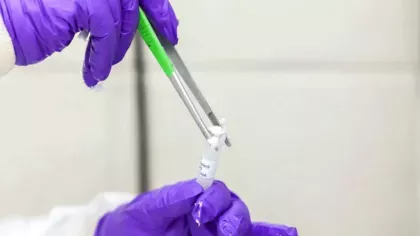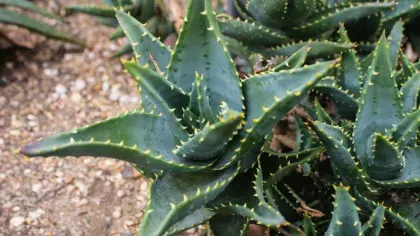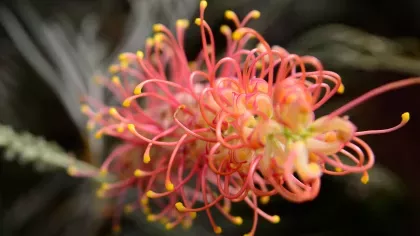Uncovering the genomic diversity of plants
Understanding how plants have diversified, the underlying mechanisms that promote genomic-level changes and the evolutionary and ecological consequences of this over time.

The immense diversity of genomes in eukaryotes has long fascinated scientists, who have tried to understand how such diversity evolved as well as its biological significance.
From this standpoint, land plants are remarkably diverse. However, despite our realisation of the substantial implications of this genomic diversity for the biology of the plants, little is known about the underlying mechanisms that promote changes at the genomic levels and the evolutionary and ecological consequences over time.
Background
Plants are remarkable in the diverse ways in which they organise, accumulate and express the DNA comprising their genomes. This diversity is seen at many levels including:
- the DNA sequence
- how the DNA is expressed (including epigenetic regulation)
- the number, size and organisation of chromosomes (range 2n = 4 – c. 1440)
- the number and origin of genomes (ploidy level; range 2x – 96x)
- the amount of DNA within the nucleus (genome size, range 1C = 63 – 148 ,000 Mbp).
Overall aim
This project aims to document and understand the origin, consequence and evolutionary significance of this striking genome diversity across land plants, and its impact in determining how, where and when a plant lives and responds to environmental change.
A particular research focus of the project is genome size diversity, which varies more than 2,400-fold across plants.The largest genome so far reported for any organism is that of the Japanese canopy plant (Paris japonica; Melanthiaceae); its genome size is about 50 times larger than the human genome, and if its DNA was unravelled, would extend over 100 m. In contrast, the smallest plant genome size is found in a tiny carnivorous plant called Genlisea aurea. Its genome is 1/50th the size of our own and its DNA would extend just 2 cm!
Ongoing Kew projects in the field of plant genome size research
- Extending knowledge of genome size diversity using flow cytometry to generate new data (currently data are available for just 3% of land plants).
- Collating new data into the Plant DNA C-values Database. This database is maintained by Kew to provide a one-stop, user friendly database where plant genome sizes can be readily accessed and compared.
- Investigating the origin and evolution of genome size diversity in key land plant groups using the latest DNA sequence and phylogenetic data available. These include projects focused on Nymphaeaceae (one of the first angiosperm families to appear in the fossil record); Melanthiaceae (the angiosperm family with the largest range of genome sizes so far encountered, including the largest genome size); Arecaceae (palms; a family comprising over 2000 species but in which nearly all species are diploid), and the genus Fritillaria (the genus with the largest range of genome sizes in terms of absolute amounts of DNA, and the largest diploid genomes of any plant); and ferns.
- Probing the types and regulation of DNA sequences which make up genomes of different sizes. Of particular interest are species with giant genomes (including Fritillaria, Paris and Tmesipteris) to understand how and why such obese genomes evolve.
- Exploring the consequences of genome size diversity at the ecological level and how this interacts and shapes plant community composition, and ecosystem dynamics and resilience.
Objectives
- To gain greater insight into the principles, processes and phenomena operating at different genomic levels which contribute to the evolution and persistence of plant biodiversity.
- To uncover the full extent of genome size and chromosome diversity across different groups of land plants.
- To understand the role that genomic diversity plays in contributing to a species’ resilience in the face of environmental change.
- Update of the Plant DNA C-values database (release 7.1, April 2019)
- Discovery: largest genome size discovered for any plant (Paris japonica), and possibly any eukaryote (Pellicer et al. 2010).
- Largest survey to date on genome size diversity and evolution in ferns published (Clark, Hidalgo et al. 2016).
- First insights into the DNA sequences comprising the giant genomes of angiosperms published, using Fritillaria as a model group (Kelly et al. 2015).
- First whole genome sequence for the enigmatic gymnosperm Gnetum montanum published (Wan, Wan, Liu, Li, Leitch et al. 2018)
- Largest fern genome discovered – similar in size to the record holder for all eukaryotes Paris japonica (Hidalgo et al. 2018)
International
- Institut Botànic de Barcelona, Universitat de Barcelona, Spain
- Department of Botany, Faculty of Science, Charles University in Prague, Czech Republic
- Laboratory of Molecular Cytogenetics, Institute of Plant Molecular Biology, Ceske Budejovice, Czech Republic
- Prof Harald Schneider FLS, School of Life Sciences, Centre of Ecology and Evolution Sun Yatsen University, Guangzhou, Guangdong, China
- Department of Botany and Zoology, Masaryk University, Brno, Czech Republic
UK
Bureš P, Elliott TL, Veselý P, Šmarda P, Forest F, Leitch IJ, Nic Lughadha E, Soto Gomez M, Pironon S, Brown MJM, Šmerda J, Zedek F. (2024)
The global distribution of angiosperm genome size is shaped by climate.
New Phytologist 242: 744-459.
Guo K, Pyšek P, van Kleunen M, Kinlock NL, Lučanová M, Leitch IJ, Pierce S, Dawson W, Essl F, Kreft H, Lenzner B, Pergl J, Weigelt P, Guo W-Y. (2024)
Plant invasion and naturalization are influenced by genome size, ecology and economic use globally.
Nature Communications 15: 1330.
Bhadra S, Leitch IJ, Onstein RE. (2023)
From genome size to trait evolution during angiosperm radiation.
Trends in Genetics 39: 728-735.
Leitch AR, Ma L, Dodsworth S, Fuchs J, Houben A, Leitch IJ. (2023)
The role of chromatin modifications in the evolution of giant plant genomes.
Plants 12: 2159.
Farhat, P., Hidalgo, O., Robert, T., Siljak-Yakovlev, S., Leitch, I.J., Adams, R.P. & Bou Dagher-Kharrat, M. (2019).
Polyploidy in the conifer genus Juniperus: An unexpectedly high rate.
Frontiers in Plant Science 10: 676.
Pellicer, J., Hidalgo, O., Dodsworth, S. & Leitch, I.J. (2018).
Genome size diversity and its impact on the evolution of land plants.
Genes 9(2): 88.
Clark, J., Hidalgo, O., Pellicer, J., Liu, H., Marquardt, J., Robert, Y., Christenhusz, M., Zhang, S., Gibby, M., Leitch, I. J. & Schneider, H. (2016)
Genome evolution of ferns: evidence for relative stasis of genome size across the fern phylogeny.
New Phytologist 210: 1072-1082
Hidalgo, O., Pellicer, J., Christenhusz, M.J.M., Schneider, H., Leitch, A.R. & Leitch, I.J. (2017).
Is there an upper limit to genome size?
Trends in Plant Science 22: 567-573.


